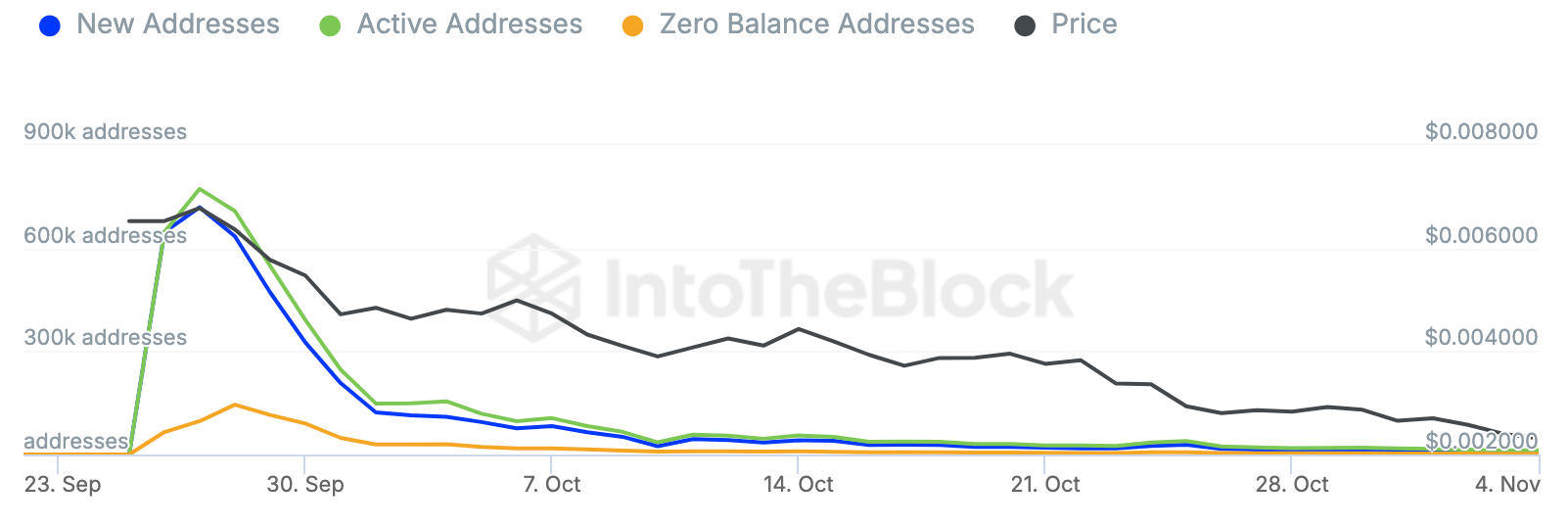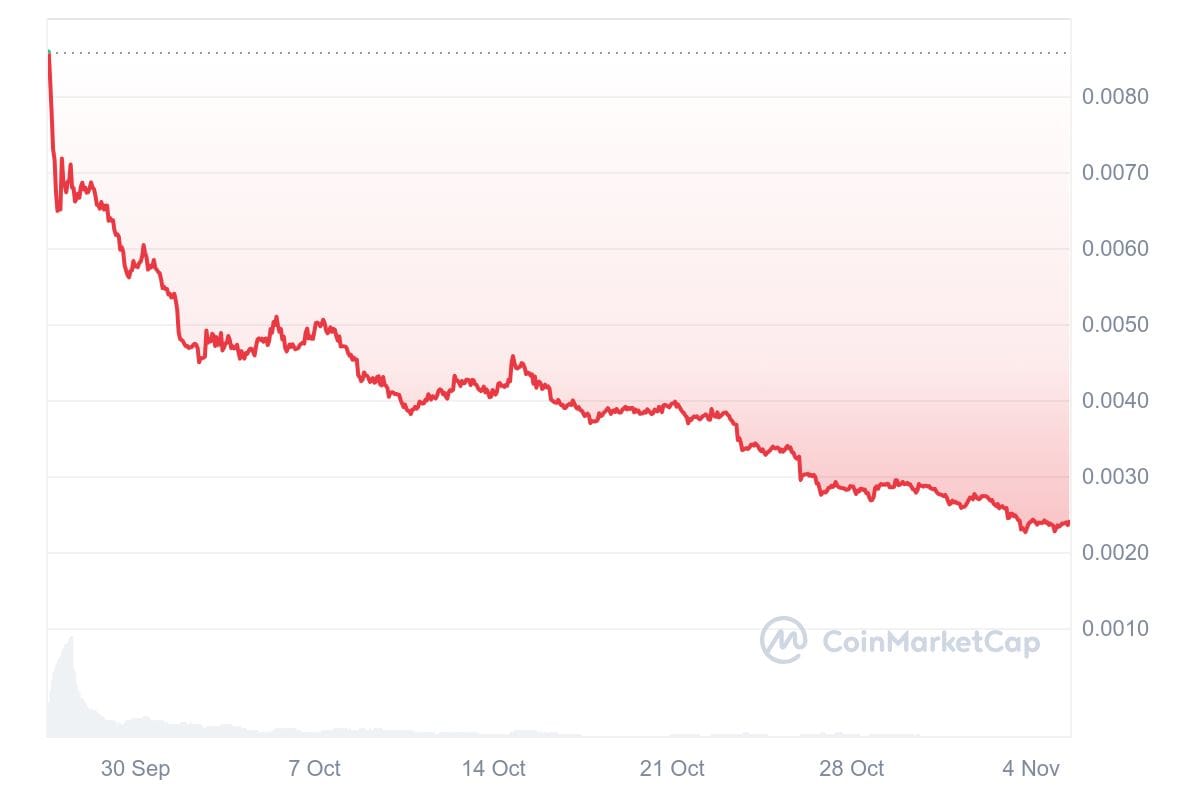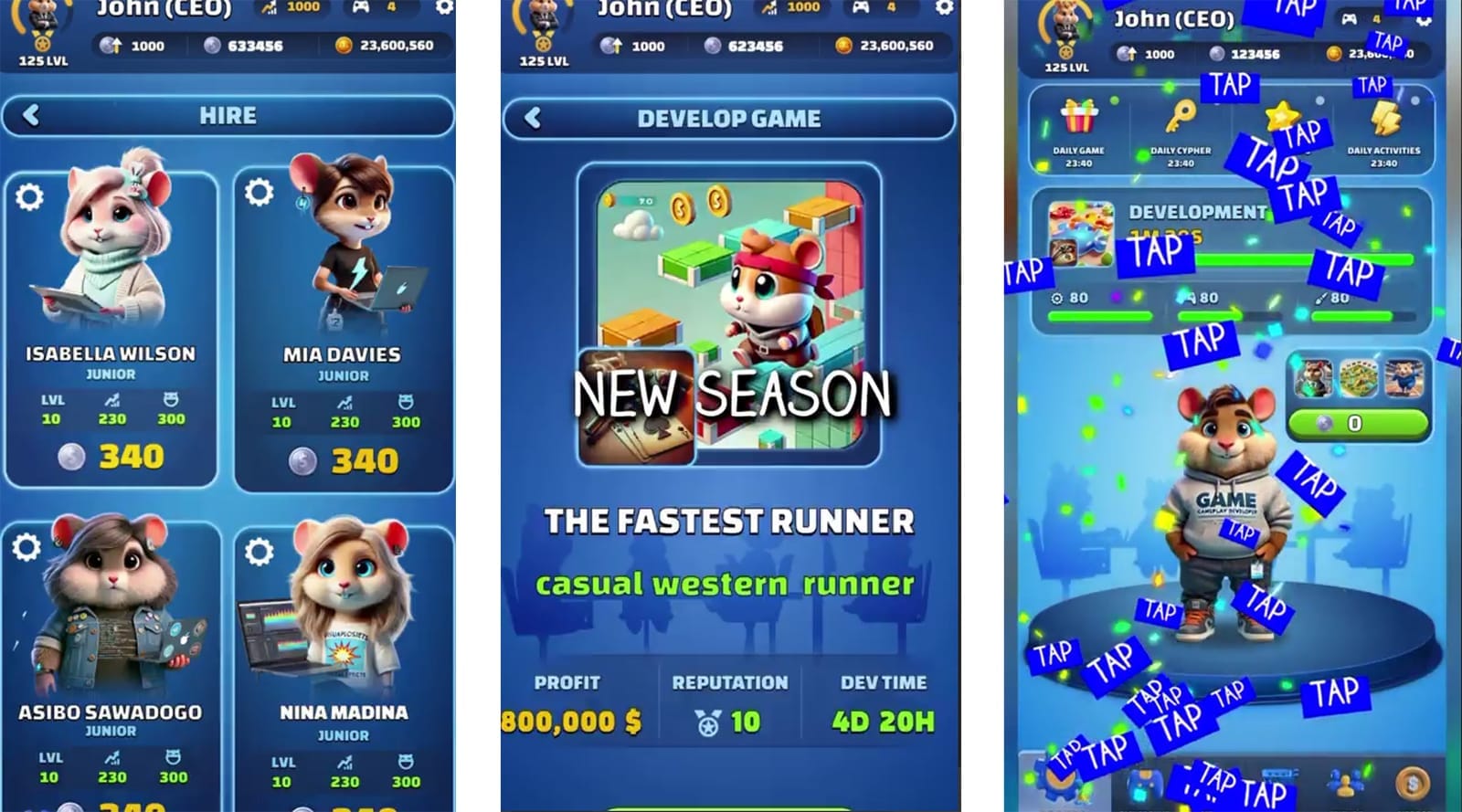
The rise of the Hamster Kombat was sudden, improbable, and surreal. An estimated 300 million users worldwide were tapping furiously on their screens in the hope of earning airdropped rewards — prompting stern rebukes from officials in Russia and Iran.
But as with most trends in crypto, this Telegram game is showing signs that it was nothing more than a flash in the pan. Barely a month after a long-awaited token launch, the project is fighting for its survival — and facing existential challenges on multiple fronts.
For one, notoriously fickle play-to-earn gamers now appear to have moved on to other attention-grabbing projects, with data suggesting that Hamster Kombat's monthly active users have fallen precipitously — down 86% to 41 million in November. While many mainstream titles would still kill for numbers like that, the project is struggling to arrest this decline.
Data from IntoTheBlock also illustrates how there's lackluster demand for $HMSTR, the game's native token.

A staggering 646,000 new addresses were created as players raced to redeem the rewards they had accrued while helping a rodent climb the ranks to run a top-tier crypto exchange. But this figure has been in freefall ever since, along with activity among existing users.
To make matters worse, $HMSTR has — somewhat predictably — failed to deliver the astronomical returns that many gamers would have been hoping for.

CoinMarketCap data shows that HMSTR's all-time high of $0.01004 was set on the day the token launched, indicating it was vastly overvalued. A continual decline has followed right up to now, and at the time of writing, it's trading at a discount of 76%, with all-time lows being set on a near daily basis.
Hamster Kombat's developers have long insisted that they want to create a sustainable gaming experience, and keep users coming back for more. But as Observers previously reported, engagement and retention is difficult to achieve — and justifying a token's value, even in bull markets, is harder.
There has long been hope that a so-called "Season II," which this time would see a hamster build a game development studio, would entice players to return — preserving the original format of the game while adding in a few new objectives to accomplish.

But as our earlier reports pointed out, just 15% of HMSTR's total supply has been earmarked for this second season, meaning the potential prize pool for players has just become a lot shallower. That would have been easier to shrug off if the token's value had risen, but it's proven to be a flop.
Alarm bells have also been ringing given how Hamster Kombat's X feed has quietened down of late. There's been little in the way of updates about how the project has been progressing. Instead, followers have had to contend with Halloween memes and irregular crypto news roundups. While Season II was meant to launch at the end of October, it's yet to materialize.
🎃 Keep Calm, Trick-or-Treat, And Carry On! 🎃 pic.twitter.com/mz3t24Tdfp
— Hamster Kombat (@hamster_kombat) October 31, 2024
Replies from gamers to each post have been less than flattering, with some mocking HMSTR's performance — and others calling for the project to call it a day.
And that brings us to the biggest issue of all: Hamster Kombat's handling of its token launch, and first airdrop, left a sour taste in the mouths of many users. There was widespread outrage at how little players received after countless weeks of gameplay, the vast sums given to influencers, the lock-up periods that have applied to these tokens, and how millions of users were barred for cheating.
Trust takes a long time to earn but seconds to break. Hamster Kombat may find it's impossible to recapture the frenzied excitement it enjoyed just a few short months ago.
